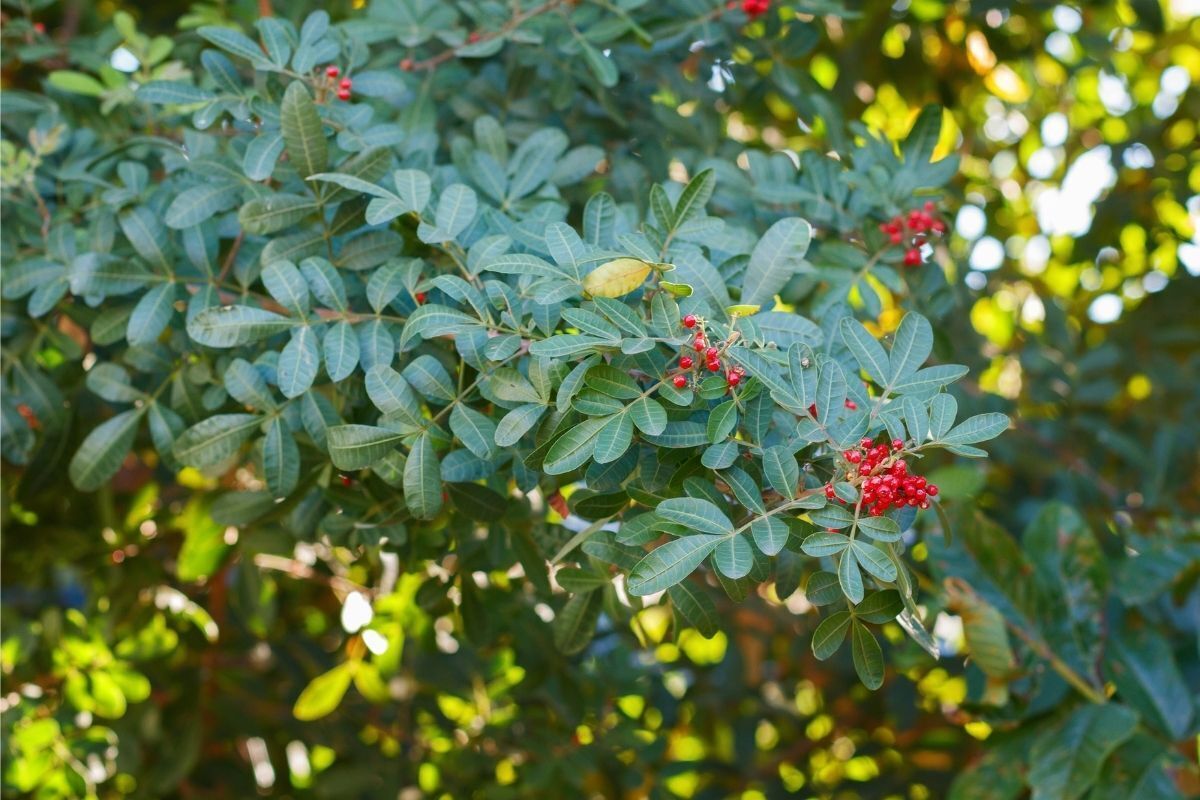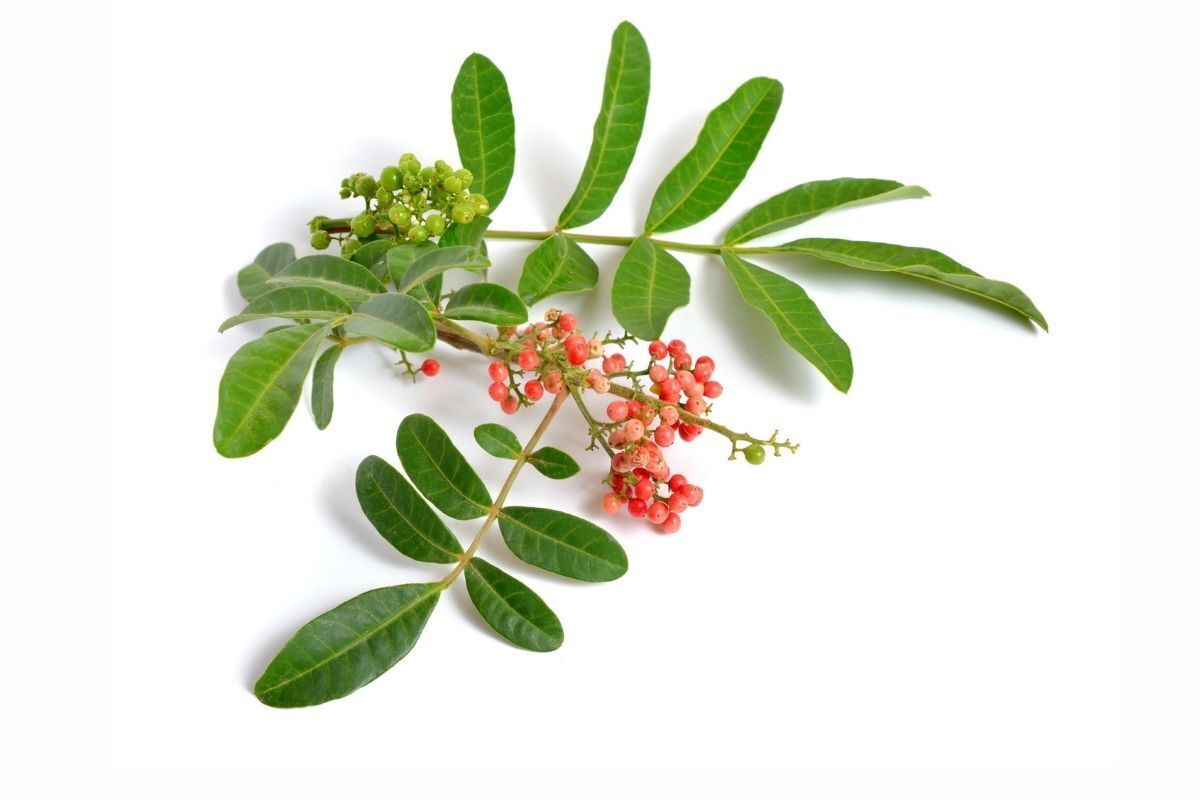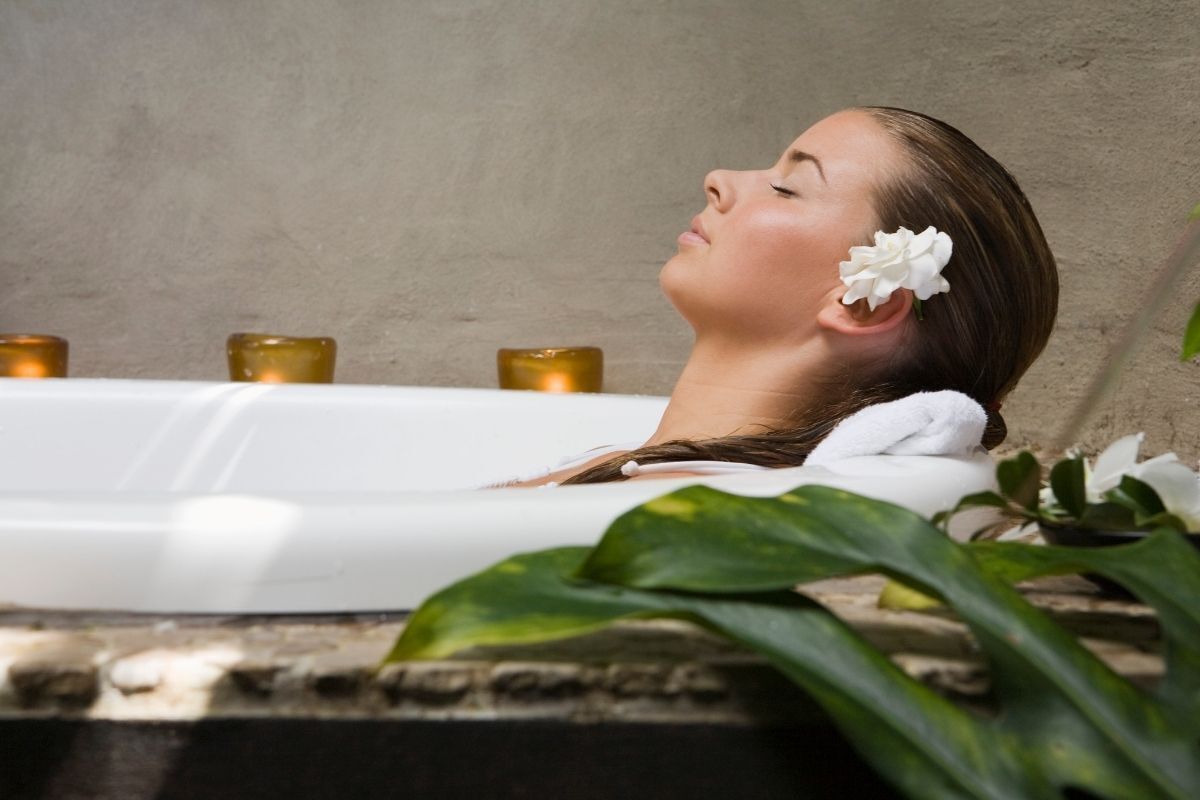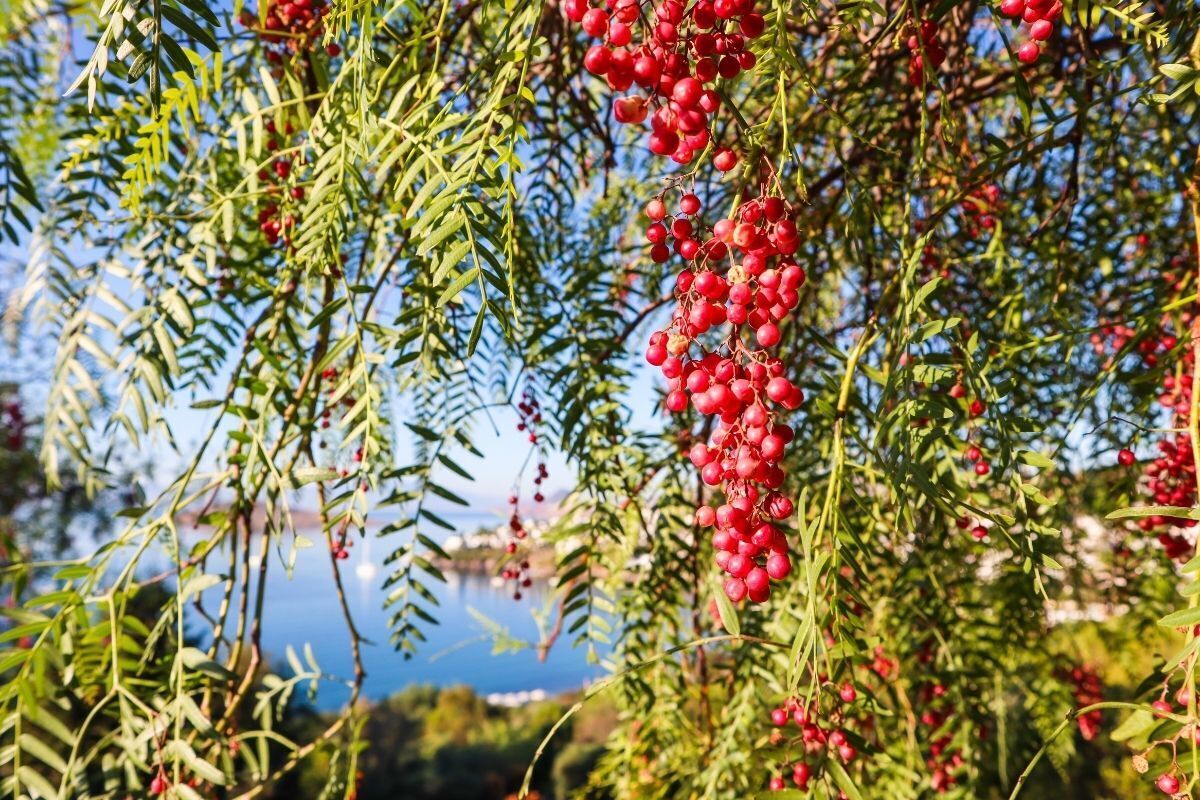Table of contents
What is the use of the mastic?

Known as red mastic, beach mastic, mastic or cornea, the mastic is widely used for medicinal purposes. It helps in the treatment of different problems in the body, such as pain, inflammation, colds and flu, standing out for being very versatile. Its consumption can be made as tea or applied to the skin.
The fruit is antifungal, antibacterial and even astringent, while the leaves and trunk can be used for tea or as a sitz bath.
The mastic is widely used mainly to treat the sexually transmitted diseases, in wound healing and much more. In this article, you will get to know all the properties of mastic and its benefits.
More about the mastic tree

It is important to know the difference between the red mastic and the black mastic. The black mastic has a sap that causes hives, edema and severe skin allergies in sensitive people.
On the other hand, the aroeira-vermelha is gaining more and more space in the pharmaceutical market, due to its versatility, being used both for tea and for the composition of intimate soaps, lotion and other cosmetic and phytotherapic products.
The use of mastic in each of its versions should be used according to its purpose. Read on and learn more about mastic.
Properties of the mastic
The mastic tea has properties that provide healing, so it is used for the treatment of various wounds.
In addition to aiding in clotting, this tea also stimulates vascularization, causing new blood vessels to form. In effect, this increases plasma and makes it easier for it to reach the injured site to act in the healing process.
The compresses made with the mastic tea are also very beneficial to accelerate the healing process of skin lesions. In addition, the tea will act more efficiently in people who have some vitamin K deficiency, for example.
Origin of the mastic
The mastic is a species native to South America, native to Argentina, Paraguay, Uruguay and Brazil. Popularly known as mastic, red mastic or pink pepper because of its fruits, it is a tree species. It is also a small to medium plant with fruits and flowers.
The mastic tree is a species widely used in urban afforestation. Its size, as well as its ornamental fruiting allied to the rusticity of the plant, make it an excellent option for landscaping, serving as a tree and hedge. It is also indicated for reforestation of degraded areas.
Furthermore, its fruit, the pink pepper, is very popular in Europe, where it is used in ornamentation and gastronomy. Its flavor is slightly spicy and sweet. Finally, from this plant it is also possible to extract wood, suitable for grinders and firewood, and essential oils, used in herbal medicine.
Side effects
The mastic can trigger a very strong diarrhea if used in excess, this is because it has purgative effect. In addition, another side effect is the lesions that it can cause on the skin and mucous membranes, and allergic reactions.
The use of mastic by pregnant women is also not indicated because it can cause some gastric problem or skin allergy. In addition, its use should be avoided by people with dermatological problems and hypersensitivity in the skin.
Contraindications
You must be very careful when consuming mastic because there is a possibility of allergic skin problems. Therefore, sensitive people who are prone to allergies should avoid using mastic.
Mastic is also contraindicated for people who have gastrointestinal problems. For example, a person who is already experiencing symptoms of diarrhea cannot use mastic. It is also not recommended for pregnant and lactating women.
Benefits of mastic

In the long term, the consumption of mastic tea brings benefits to the body because of its functions as an antiseptic and anti-inflammatory. In addition, the mastic stimulates the elimination of toxins through urine, purifying the body.
Its benefits include a strong healing and oxidative action, as well as being in the treatment of heartburn, cystitis, gastritis, urethritis, urinary problems, sciatica, injuries, sexually transmitted diseases, respiratory problems, among others. See below the beneficial effects that the mastic provides.
Improves immunity
The mastic, being rich in antioxidants, promotes the strengthening of immunity. In addition, its anti-inflammatory action will prevent diseases such as infection and inflammation to harm the body. Thus, to increase the immunity of the body is necessary to consume a cup of mastic tea every day.
The mastic bath will also potentiate the increase of immunity, as well as provide a calming and wellness effect, improving stress.
Helps in the treatment of respiratory problems
The mastic is a versatile plant that has properties that help in the treatment of respiratory problems. Moreover, the pink pepper, which is the fruit of the mastic, has a higher concentration of vitamin C than that found in orange, which helps prevent the flu.
A resin is extracted from the stem of the mastic tree and used to produce mastic oil, which is used to relieve pain, for a chest massage to help breathing, as well as a cicatrisant and purgative.
Finally, the mastic tea is a great expectorant, stimulating the secretion of mucus, improving cough and also helping in cases of bronchitis.
It is good for the skin
The mastic has antiseptic and anti-inflammatory effects, besides being a natural astringent. The tea used as a tonic helps eliminate excess oil on the skin, and at the same time acts as a drying agent for acne. Frequent use on the skin promotes the whitening of spots.
Because it is rich in antioxidants, it is good for skin health, as it inhibits the action of free radicals, preventing premature aging. However, for the treatment of inflammation and small injuries on the skin, it is preferable to use the tea directly on the lesion.
Anti-inflammatory
Mastic is a powerful anti-inflammatory that helps relieve joint pain such as tendon distention, arthritis and erysipelas. Its use also serves to treat inflammatory diseases of the digestive tract.
One study found that patients who took mastic for four weeks reported a significant decrease in the severity of inflammatory symptoms related to Chron's disease. This is a common form of inflammatory bowel disease, which causes inflammation in the digestive tract, causing pain, severe diarrhea, weight loss, anemia, and fatigue.
Finally, mastic tree oil is also effective in relieving toothache and other joint trauma. Extracted from this medicinal plant, the oil also helps athletes prepare for physical exertion.
Decreases the acidity of the stomach
Mastic contains analgesic, anti-inflammatory, depurative and antacid property which is effective against gastritis and ulcer by decreasing stomach acidity. Thus, mastic tea helps in relieving stomach discomfort and also helps in treating heartburn.
In addition, it helps calm the intestine and digestive system, providing the balance of the body. This happens because this plant has numerous beneficial compounds, such as tannins, polyphenols and flavonoids.
Helps the treatment of genital infections
The mastic tea eliminates fungi and bacteria from the body. This happens because it has bactericidal action. In addition, it is widely used to treat sexually transmitted diseases such as syphilis, gonorrhea and vaginal discharge.
By the way, the most used form of mastic in the treatments of genital infections is done by boiling the leaves and bark of this plant for the sitz bath. This infusion has anti-inflammatory, healing and analgesic properties, and therefore, can ease the symptoms of infections.
Helps to reduce fever
Generally, when the body has some infection or inflammation, the body temperature increases causing fever. In view of this, many diseases caused by viruses, fungi and bacteria can cause this symptom.
In this sense, the mastic acts as an antimicrobial, anti-inflammatory and antibiotic. That is why the mastic tea is used for fever control. In addition to tea, compresses can be made that help lower the body temperature.
Calming effect
The stress and anxiety of everyday life causes many people to suffer from insomnia, discouragement, and irritation. To treat this, mastic tea is a great calming agent that helps the body stay relaxed and also induces sleep.
By the way, you can enhance the effect of this tea with other herbs like mint, chamomile and lemon balm. You can also take the mastic with passion fruit juice, because besides calming, it is also a refreshing drink.
Diuretic
The mastic has diuretic function, ie it helps to stimulate and eliminate toxins from the body through urine, contributing to the purification of the body. Its diuretic effect is quite effective thanks to it promotes the proper functioning and cleansing of the kidneys.
With this, the elimination of accumulated fluids through the mastic tea will help in the treatment of problems in the urinary canal. This diuretic, besides taking care of the urinary system, is widely used in the treatment of fluid retention, which also helps in the weight loss process.
Good for diarrhea
The mastic tea is used to ease diarrhea, however, it must be taken in moderation. Being anti-inflammatory, antidiarrheal and antidiuretic, it will calm the intestinal flora and also help in the digestive process.
In the first days of diarrhea, the mastic tea can not be consumed, due to the mechanism of protection and elimination of the causative agent. It is also necessary to be careful when consuming the mastic tea in case of diarrhea, because in excess it has laxative effect, and can cause problems such as dehydration.
Aroeira tea

The preparation of the mastic tea will vary according to the type of use you intend to make of the drink. There are some ways to prepare it. For internal diseases, it can be made by infusion, for external diseases the preparation is made by cooking the bark or leaves to be used directly or with the use of compresses.
Another way to use the mastic is in the form of sitz bath or energy bath. Below see how to prepare and what the function of each one.
Indications
The mastic tea contains astringent, healing, laxative, diuretic, anti-inflammatory substances and properties, among others. To prepare this tea, you can use the leaves and the bark of the mastic tree.
In short, this tea has the function of purifying the body, relieving the symptoms of illness and pain. In addition, it can be used as a soothing agent and also as a lightener of dark spots, cicatrizing acnes and in the treatment of other problems associated with the skin.
Ingredients
Mastic provides many health benefits, for most ailments the tea needs to be more concentrated, so you will need the following ingredients.
- 150 g mastic leaves;
- 4 pieces of mastic bark;
- 1 liter of water.
How to do
The way to prepare this tea is easy and simple:
- In a container heat the water;
- Put in the leaves and bark and boil for about 5 minutes;
- Wait for it to cool down and strain.
This tea can be taken warm or, if you prefer, you can drink it iced during the day as per your requirement.
Aroeira energetic bath

The mastic tree has a calming and invigorating action, so the energetic bath with this plant promotes well-being and a sense of relaxation. In this way, the bath will act to energize the body and soul, and will also provide prevention of various health problems.
Thus, the mastic is used to promote both spiritual and physical well-being. Read more and learn how to associate the mastic with other ingredients, what this energy bath is for and how to prepare it.
Indications
The mastic bath is indicated to bring good energies. Associated with other ingredients such as rock salt, for example, it will enhance this effect even more. Therefore, besides being used as a medicinal plant, it also helps in the spiritual field.
The combination of these two ingredients is perfect for those seeking protection and complete cleansing of body and soul.
Ingredients
The ingredients for this energy bath are affordable. Moreover, it is very practical to make. So, you will need the following items:
- 3 tablespoons of coarse salt;
- 300g mastic leaves;
- 2 liters of water.
How to do
To prepare the energy bath, follow the step by step below:
- Put 2 liters of water in a container;
- Add 3 tablespoons of coarse salt, into the boiling water;
- Add 300g of the mastic leaves;
- After boiling everything, leave it to stand for 35 minutes;
- Then strain.
The bath should be during the hygiene bath. Just throw the water from the mastic tree with coarse salt over your shoulders and mentalize good energies during this ritual.
Aroeira Seat Bath

The mastic in the sitz bath is mainly used to treat sexually transmitted diseases, inflammation and urinary tract infections. Therefore, this sitz bath is widely used by women to improve their genital health. This is because the plant has healing and antifungal properties.
This bath is made to come into contact with the inflamed or infected area. Below see in detail how to prepare, indications and more.
Indications
For being healing, bactericidal and fungicidal, the mastic is widely used in medicinal teas since ancient times. Thus, the sitz bath is an ancient practice, indicated to treat infections in the intimate parts. This type of bath helps to ease the symptoms of urinary tract infection in men, but it is more common to be done by women.
It helps relieve the symptoms of diseases caused by the herpes virus, candidiasis and others. Its action promotes the cleaning of this region, minimizes the risk of infection, soothes inflammation, favors healing and increases blood circulation in this area.
Ingredients
The ingredients for the mastic sitz bath include:
- 50 grams of mastic bark;
- 2 liters of water.
How to do
To do the sitz bath is quick and easy, check it out:
- In a container place 2 liters of water;
- Then add 50 grams of mastic bark;
- Let it cook for 45 minutes;
- Then strain and place in a basin.
After you put the liquid in a bathtub or basin, wait for it to get warm. Then you will squat down, as you need your genital area to be close to the water to have an effective effect.
Do I need medical advice to use mastic?

It is necessary caution and medical advice to use mastic regularly, because the excess can cause intoxication and even side reactions. Thus, its use, even being a medicinal plant with natural substances, should be done with moderation, because exaggeration can trigger disastrous reactions, such as allergies, injuries and other damage to the body.
In addition, the appropriate dose of mastic depends on several factors, such as age of the user, health, and various other conditions. At present, there is not enough scientific information to determine an appropriate range of doses of the plant.
Therefore, remember that natural products are not always necessarily safe, and excessive dosages can be harmful, so be sure to consult your pharmacist, doctor, or other health care professional before using it.

